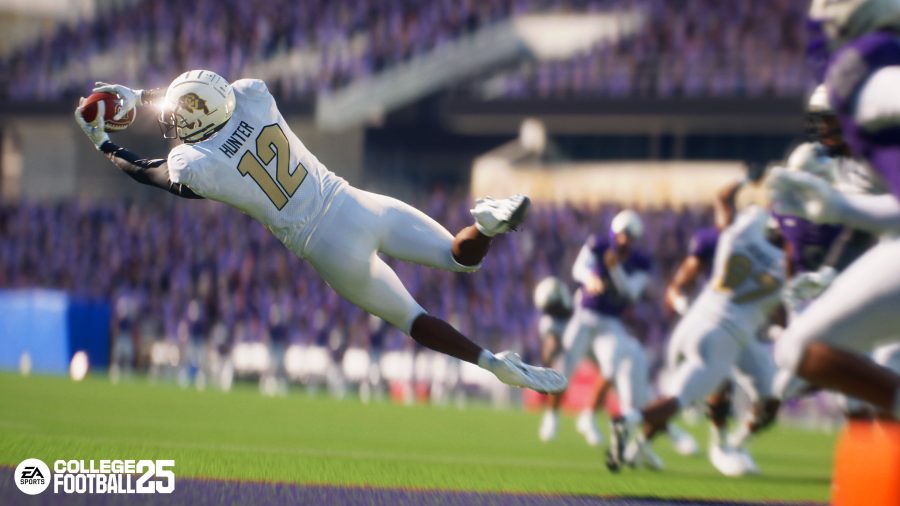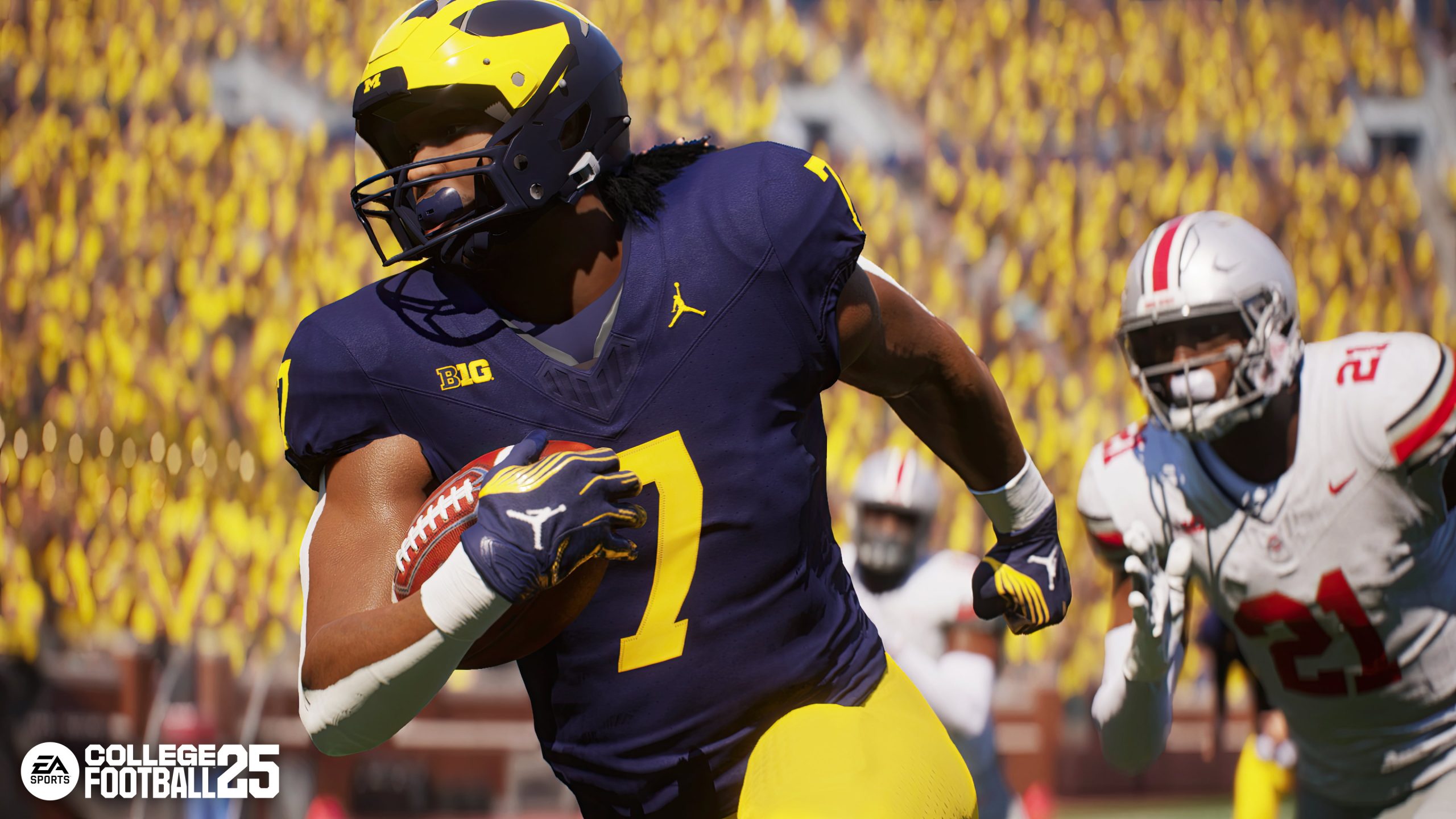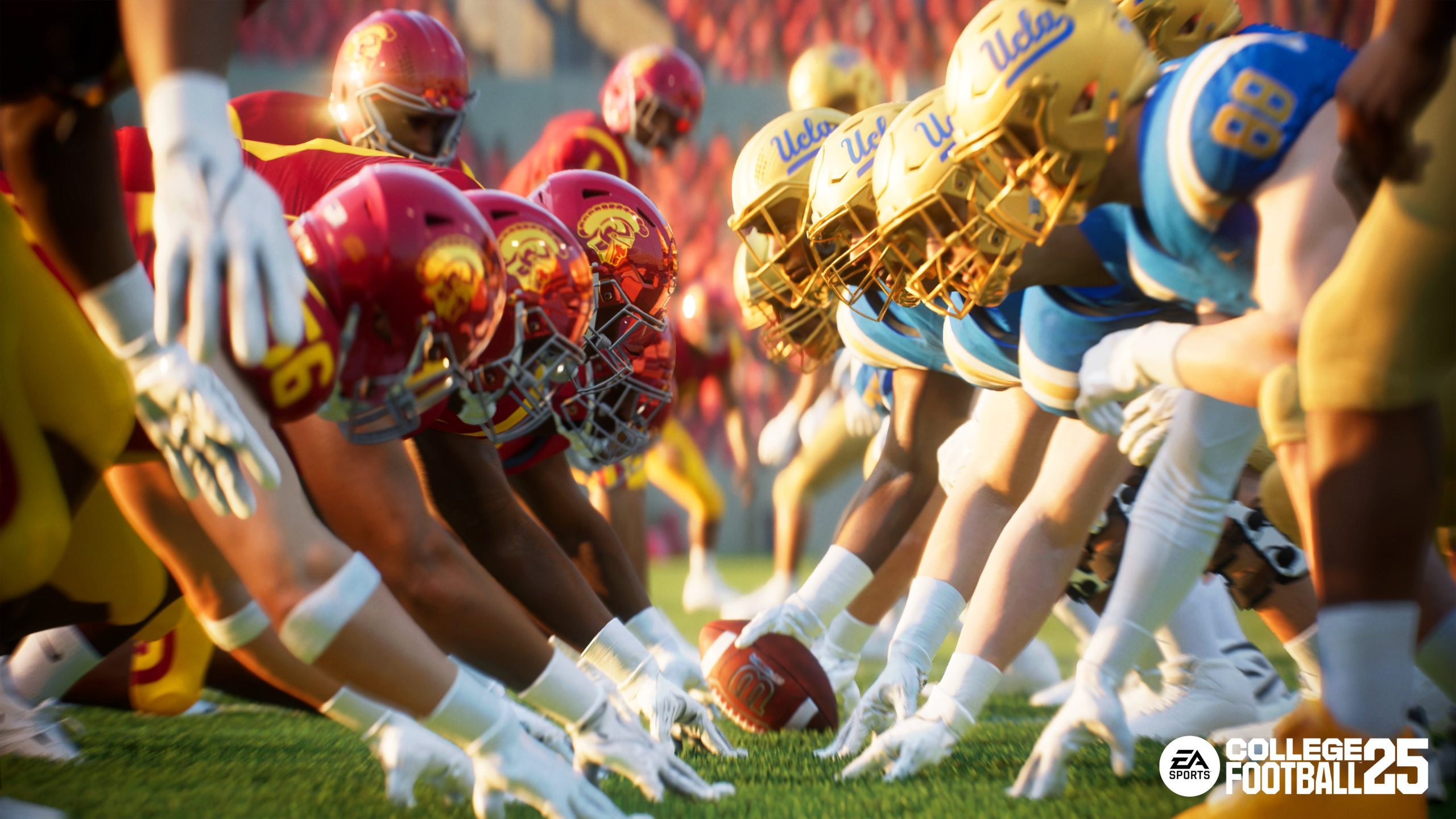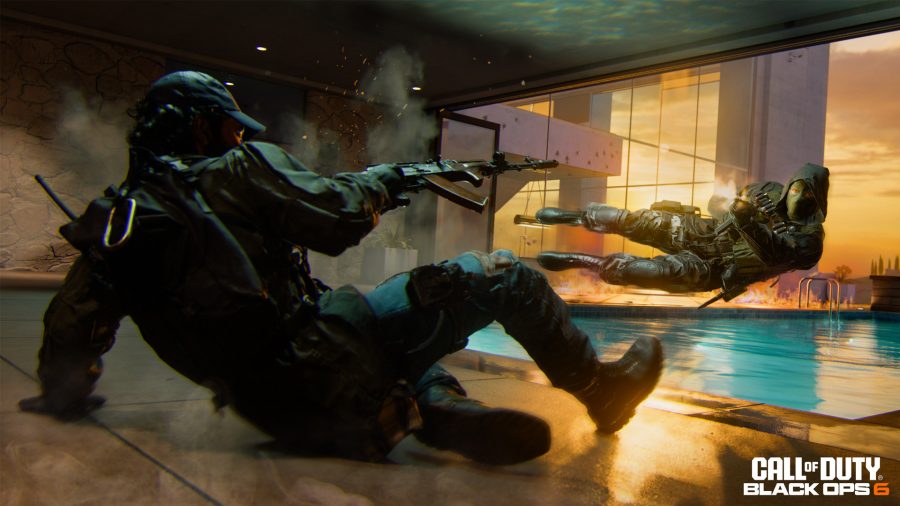The three years of anticipation for College Football 25 have been a combination of giddiness and glee that an old favorite is coming home, and anxiety that it might be something different, or less featured than what fans loved in the old NCAA series. Let me put all of that to rest now: EA Sports College Football 25 is like reaching into the back of your closet for your old letterman’s jacket, and finding out it still fits after all this time.
The gameplay is dynamic, exciting, and capable of broken-play rescues that you have never seen before. Franchise, the series’ bedrock mode, leans into the player management opportunities that only collegiate football affords, through its recruiting and playbook customizations.
Road to Glory, the big-man-on-campus fantasy, likewise takes full advantage of the compact experience offered by four years of eligibility. And Ultimate Team, though it doesn’t do anything particularly unique, isn’t just a reskin of Madden Ultimate Team, and its compact offerings still have strong appeal.
College Football 25 launches July 19 on PlayStation 5 and Xbox Series X, July 16 for those who have pre-ordered the game.
College Football 25’s gameplay: Big hits you can still recover from
Let’s start with the gameplay, though, as it serves all of the modes of play. It’s one thing to say a sports title’s gameplay is crisp and realistic, as I have for more than a decade. It’s another to see all my thoughts about it summarized in a single play. To wit:
This came in Ultimate Team, on a difficulty lower than what I normally play. But this wasn’t a defense behaving stupidly that sprung me for the touchdown. There are two hits that, in the past, would have effectively ended the play right there. They would have forced my runner into a stumble animation he could not break, enough for the rest of the defense to arrive and finish the job.
Instead, my runner was actually stabilized by the second glancing blow, remained upright, and spun out of the scrum, and with all of the defensive backfield coming to the play, there was nothing but daylight to the endzone.
You’ll see a lot more of this in Madden NFL 25, a series long beholden to canned, unbreakable animations. You know those runs where Barry Sanders would go into a cloud of defenders and somehow scamper out Looney Tunes-style while they grasped at air? That’s on deck in both games, thanks to newer logic and animation technology.
My first point of measurement for an American football video game is the running game; obviously plays like that help. College football, however, uses option runs in ways the pros do not. Triple options and read options (used more in the NFL) can be intimidating because they depend on finding the defensive “keys” and recognizing what they are doing in time to make the correct choice for who gets the ball. But a game without a challenge is not much of a game.
The straight option run, from a flexbone or veer formation, however, is a thing of beauty thanks to the aforementioned stumble mechanics and physics. The point of that run is to pitch it as late as you can, and I’ve even tossed after a hit to spring the trailing runner. Better-rated linebackers and defensive backs who have run-stopping capability can still corner the play, but the message is clear: a hit is not enough.
As far as the hitting goes, it’s ferocious and contextual. There’s almost no need to lay on the right analog “Hit Stick” when you want to blow someone up. As I said in an earlier preview about Madden, College Football 25 likewise excels at presenting a modern game that is more about shoves and shivers to the body than concussive blows, for obvious reasons. But I remember that running down a quarterback often took a user-initiated tackle (X/square, or the Stick). Here, no, just steer a guy into him, you’ll get a delightful blow-up.
College Football 25 Franchise: Management made easier
As a video game, collegiate football has always present a wrinkle on the sports management sim in that players choose a team, not the other way around. The recruiting experience can be a downpour of information, as while you’re both scouting a prospect to see if he is worth one of your precious scholarships, you’re also trying to figure out whether he’s even going to give your school the time of day.
College Football 25 assists this, and not in a thumb-on-the-scale way, by organizing the information into a sortable spreadsheet calling out what your team needs for the next season, finally. I remember many pad-and-paper days where I was writing down how many players I’d have at each position after this year’s seniors graduated. (I still have my notes for Kansas in 2013, even). Now, College Football 25’s menu simply says “NEED” next to a prospect if his position group needs attention in the coming year.
From there, yes, you can see his one-to-five star rating, as well as his interest in you, and even whether he’s from a part of the country where your coach has a special connection (the “pipeline”). That’s combined with the “dealbreaker,” which is a recruit’s most important priority, like playing time or proximity to home. If you can’t meet what he wants, you’ll be told right there not to waste your time, and I appreciated that assist.
That said I did notice some discordant uses of the dealbreaker. Supposedly one player was deal-broken to me (with a no sign over a handshake) even though my team, Indiana, was listed as no. 1 on his preferred list of schools. I was still able to offer a scholarship. Other players with the same icon were fully locked out from any further communication. I’m not sure if this was a glitch, but if not, it was one area where information was a least incomplete.
It’ll take a while to see the longer-term effects of the relationship begun in recruiting, which includes things like playing time promises. Longer still before I start battling the transfer portal, which has come into being in the decade since NCAA Football 14. But the gameplay described above is more than enough reason to play a full season.
Franchise lets players start as a head coach, or a defensive or offensive coordinator controlling only those plays for the game. I recommend beginning as a coordinator because leaving half of the game up to the AI allows for some brutally realistic losses if you’re trying to take an historic underdog to a national title, something of a tradition in this series. As a head coach controlling the whole thing, it’s tough for me to accept losses, even to superior teams.
College Football 25 Road to Glory: Living your best life
Road to Glory is the single-player career where you create one athlete and control only him. College Football 25 manifests this with an off-the-field time management component where, yes, you have to go to class. It’s surprisingly engaging, mainly because you always have to be on guard for your conditioning and injury potential.
It’s also not going to give you everything you want at the outset. Players can create themselves as one of five classes of player, from Elite to Contributor. Obviously a five-star recruit can write his own ticket, but where’s the challenge in that? As a four-star, my best offer was still second-string at Clemson. In any event, the early goings of Road to Glory are a clever preamble of earning your coach’s trust and respect, which ends in a promotion up the depth chart, which is won through a mini-game challenge.
Some of these mini-games can be hard if you haven’t played them yet, and it was frustrating at first to have my career pivot on whether I could dodge giant tennis balls being shot at me as I weaved through tackling dummies. But this still does a couple of things: It gives the out-of-nowhere Rudys of the world a playable and engaging chance to make starter, and again, it doesn’t just hand you stud status on a plate.
As a second-string running back, I wasn’t in for every down of my first game, though I did score on my first drive. The big-game commentary team of Chris Fowler and Kirk Herbstreit (we were playing No. 1 Georgia in Atlanta) properly noted the moment. Freshmen especially will have only one play in the play-calling window (with five opportunities to change it). More plays and more changes are available the more your coach trusts you.
Like Franchise, Road to Glory is about relationships, and not just between the player and his coach. There’s a chance for you to sabotage the guy in front of you on the depth chart by “forgetting” to wake him up for morning practice. And when you’re committed to signing autographs at a car dealership when you really should be recovering from the last game — I came back from Georgia at “severe” risk of injury and only had one hour to knock that down to “high” — you’re really going to understand that the life of a campus superstar isn’t all hot girls and fawning alumni.
College Football 25 Ultimate Team: A small buffet, still enjoyable
I was surprised by how much time I spent in this game’s Ultimate Team considering how little it was discussed at the preview event in May. I use Ultimate Team’s challenges as a kind of onboarding or refresher tutorial, and here it works well. But once the real loot started piling up in the Solo Battles and Solo Seasons modes (I’m a multiplayer chicken) I was hooked.
That said, there isn’t much more to it than those three modes, plus online head-to-head, and House Rules (a shorter game played under specific parameters) all of which are found in Madden Ultimate Team. For a sport given to recruiting, I would have figured some kind of quirky draftlike would figure into this game.
Ultimate Team will be supplemented with live service content, particularly reflecting real-life events (and some historical ones, too). It may not seem like much out of the box at the beginning — and it isn’t — but it’s still a good place to get that team-building serotonin hit without the deep investment Franchise necessarily requires. Yes, it has microtransactions, and the freely earned currency seems insubstantial at first. But play anything other than Challenges and you’ll see the rewards pile up pretty quickly.
College Football 25 summary: A must-have for sports fans
The wait was long, basically a decade since we’ve seen college football in any video game form. Whether it was worth it is in the eye of the player, but I can definitely say it is rewarded with a guns-blazing effort from EA Sports Orlando.
Read back through our earlier previews for more on College Football 25’s gameday presentation, visuals, and broadcast package, all of which deliver first rate immersion. Small school or powerhouse, whether you went there or you’re playing with them cause you like their traditions, College Football 25 provides one of the sweetest affirmations a sports fan could ever find in a video game.























